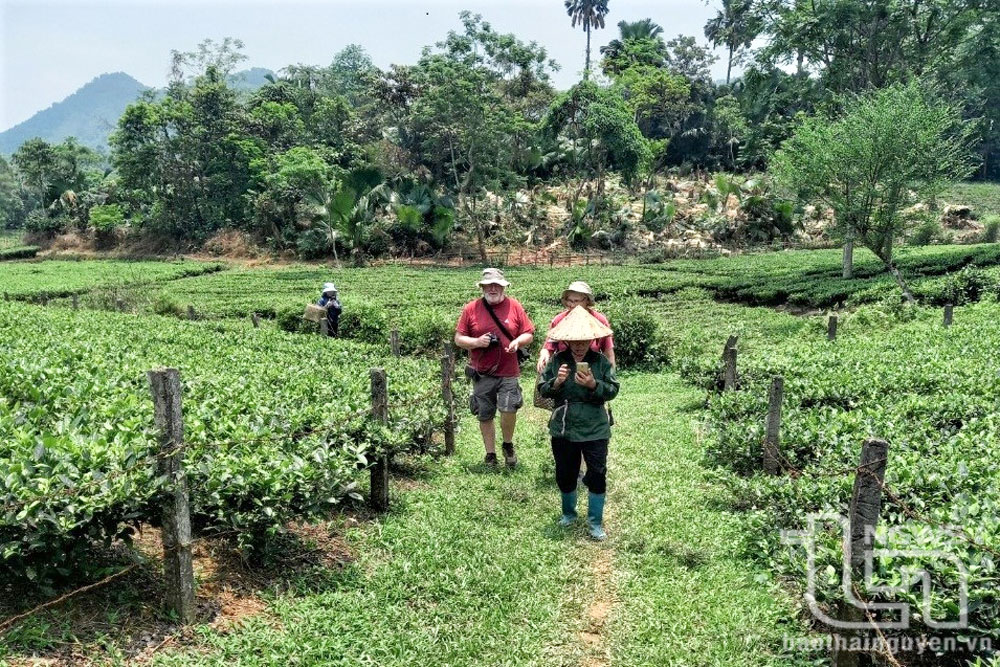 |
| Foreign tourists participate in experiencing production labor with farmers. |
The road from the center of Diem Mac commune to Ban Quyen tourist village is not wide, but it is enough to welcome friends from all over. The people of Ban Quyen village often welcome guests with such simple words, but it creates a close and friendly atmosphere. Many foreign tourists when coming here quickly feel fond of them and ask to stay to experience the rustic life with the people.
Mr. Charlotte William, an Australian tourist: The scenery from the beginning of the village left us with a beautiful impression. Along both sides of the road were shady trees. Then the simple gate had a giant đàn tính on each side. Continuing into the village, we saw ancient stilt houses. Then the fields, forests, rice paddies, beaches, historical sites, and even singing, cuisine ... everything was strange.
With a total of 24 historical relics of the resistance war that have been granted certificates, erected steles and scientifically recognized by the State, Diem Mac commune has become one of the localities with the most historical relics in Dinh Hoa district. Especially the Khau Ty hill relic - where President Ho Chi Minh lived and led the resistance war against the French colonialists from May 20 to October 11, 1947. All have become red addressesfor educating revolutionary traditions, and at the same time, a destination for domestic and international tourists.
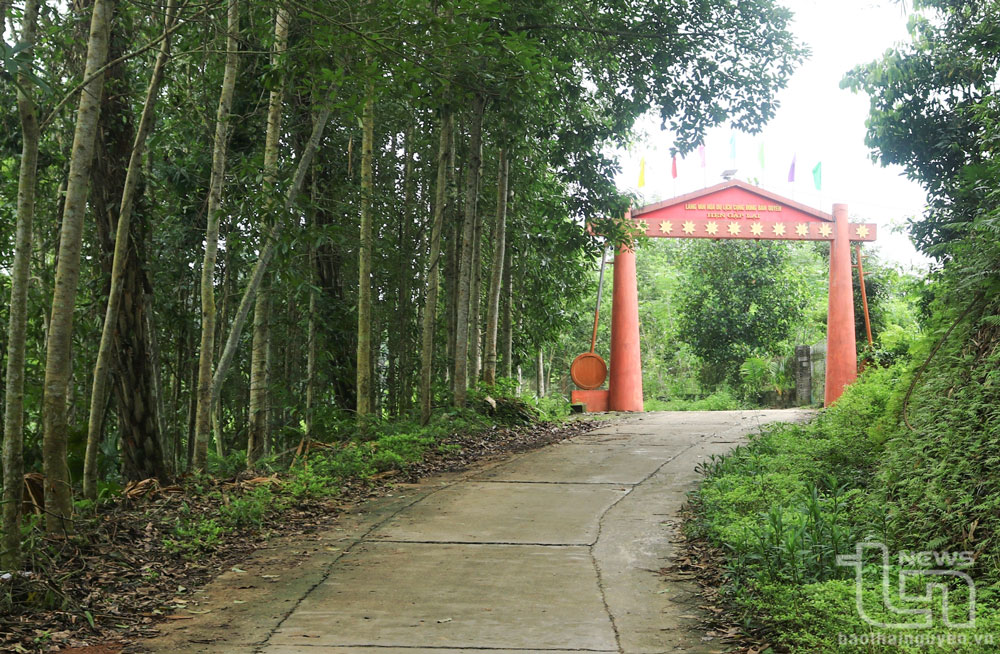 |
| The entrance to Ban Quyen tourist village has two Tinh zithers. |
Mr. Ma Dinh Soan, a homestay service provider at the beginning of the hamlet, said: The hamlet has 15 families receiving support from the State to preserve and maintain their houses. These are traditional stilt houses and many generations live together. And these are also households participating in community tourism.
Mr. Ma Dinh Duoc: With the support of the State, families have invested in repairing and building additional auxiliary facilities such as toilets and bathrooms to ensure cleanliness and meet the needs of tourists.
To be worthy of being the first tourist destination on the hill of the "President's Palace" in the "Windy Capital" of Dinh Hoa, in recent years, the province has invested billions of VND in the implementation of the project to build and operate the community tourism model of Ban Quyen hamlet. The project includes many infrastructure works related to the lives of local residents. In addition to supporting the repair and upgrading of solid housing, ensuring that tourists come to visit and stay, there are projects worth billions of VND to create landscapes and environments for tourism.
Sharing with us, Mr. Ma Dinh Van said: The State supports, the villagers also contribute to build concrete roads, plant trees to make fences in front of their houses; design and renovate some rice fields, tea plantations, decorate houses to welcome guests. To do tourism, most of the households that register to serve tourists are allowed by the province to visit and learn from experiences in some community tourism villages in Ban Lac, Ban Poom Coom (Mai Chau - Hoa Binh); Tan Cuong (Thai Nguyen City); Cultural - Tourism Village of Vietnamese Ethnic Groups (Dong Mo, Son Tay, Hanoi)... Thanks to that, the villagers know how to do tourism, simply by working together to serve tourists such as: Organizing Then singing and Tinh lute programs; serving food and drink; leading visitors to visit Khau Ty hill relic and experience the work of farmers.
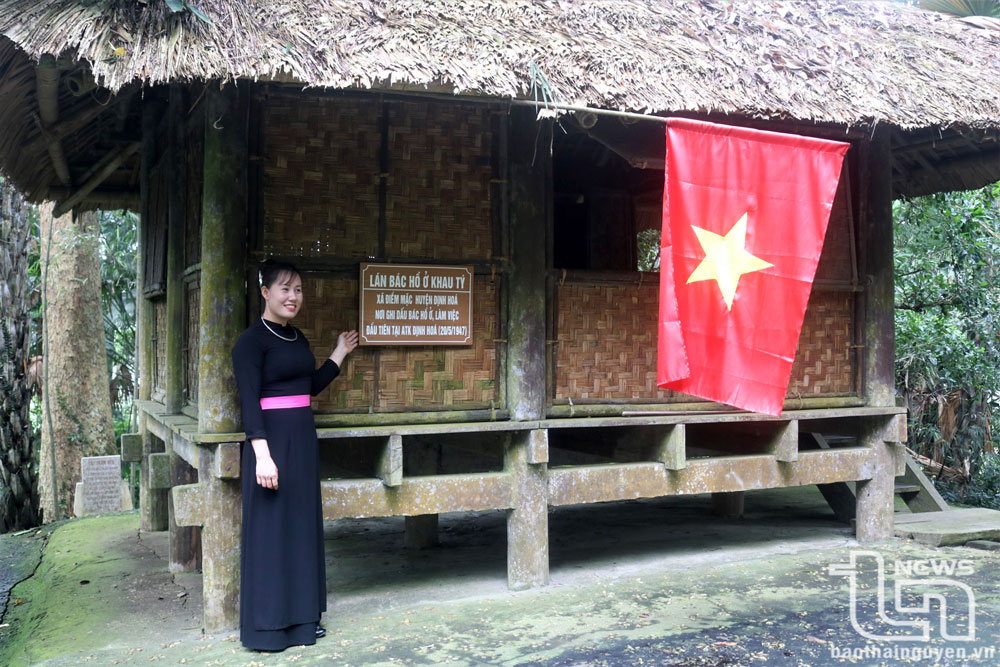 |
| Khau Ty hill historical site. |
By the fireside of Mrs. Ma Thi Lan's family's stilt house, the Tinh zither and the tremolo set in the hands of the "garden artists" were playing cheerfully, pushing the lyrics of the Then songs "Bac mua Khau Ty"; "Trang soi duong Bac"; "Tieng chim kham khac" to a climax, then blending in the forest wind, suddenly blooming like the great forest in spring, making many tourists excitedly clap their hands to the beat. At that moment, a tray of food was placed in the middle of the floor with grilled chicken, sticky rice, wild banana salad, fern... The fragrant fermented wine, the more you drink, the more sober you become, leading tourists back to the Then Muong, to the palm forest, and the tea hills, evoking the poem of To Huu: "How happy is a morning in May / The road back to Viet Bac to visit Uncle Ho" .
There is still here on Khau Ty hill a hut built in the architectural style of the Tay ethnic group's stilt houses in Viet Bac. Behind the house is an ancient tram tree, the hibiscus that Uncle Ho planted is still lit up with red flowers, reminding us of the old summer. Yes! Nearly 80 years ago, this was the place where President Ho Chi Minh wrote "The call for compatriots and soldiers nationwide to resist the French colonialists"; wrote a letter to the Organizing Committee for the National War Invalids Day, agreed to choose July 27 every year for all people to show their gratitude to war invalids and martyrs' families; and wrote the poem "Night Scene".
In particular, the book “Reforming the way of working”, an important work on Party building, study materials, cultivating the ideology, ethics and working style of cadres and party members. Many important meetings with General Secretary Truong Chinh, Commander-in-Chief Vo Nguyen Giap, and Viet Minh President Hoang Quoc Viet discussing the resistance war and national construction were held in the hut on Khau Ty hill.
Like the source of water, the story of tourism of Ban Quyen people flows forever as if it has no end. It is as clear as the Then singing, as bustling as the Tinh lute and as warm as the red fire, making many tourists who have visited Ban Quyen once remember forever the story of a land chosen by history as the first capital when President Ho Chi Minh returned to ATK Windy Mountains of Dinh Hoa to lead the resistance war against the French colonialists.
Source: https://baothainguyen.vn/van-hoa/du-lich-thai-nguyen/202505/lang-du-lich-ben-doi-khau-ty-b421b8c/



![[Photo] Prime Minister Pham Minh Chinh chairs the Government's special meeting on law-making in May](https://vphoto.vietnam.vn/thumb/1200x675/vietnam/resource/IMAGE/2025/5/22/1c880aae96fd4e0894abc47a46fe19ba)

![[Photo] General Secretary To Lam chairs a working session with the Central Internal Affairs Commission](https://vphoto.vietnam.vn/thumb/1200x675/vietnam/resource/IMAGE/2025/5/22/3b7790f499da45b2803d8ae253207ef1)


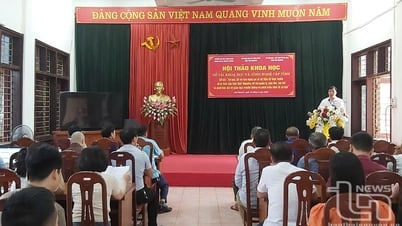
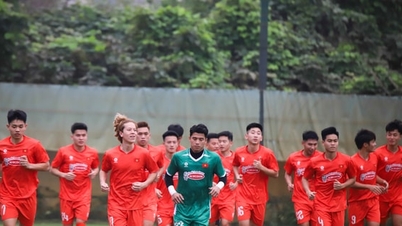

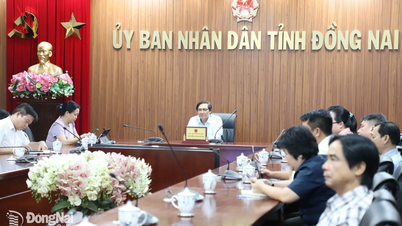

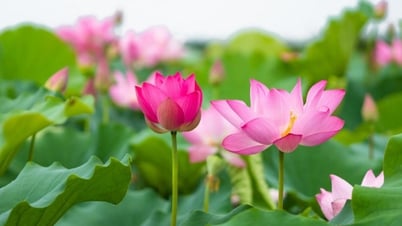

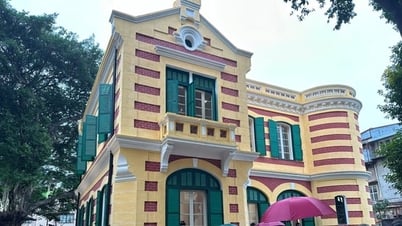
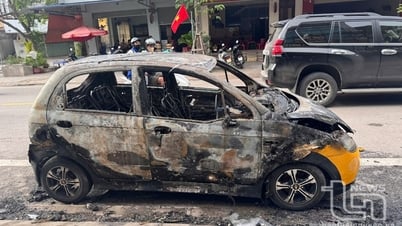




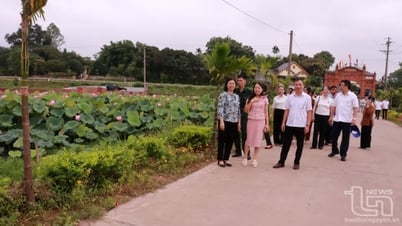

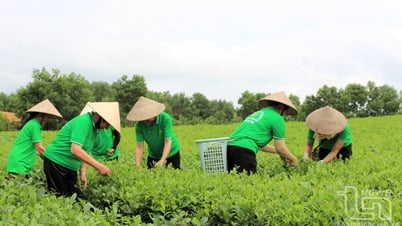
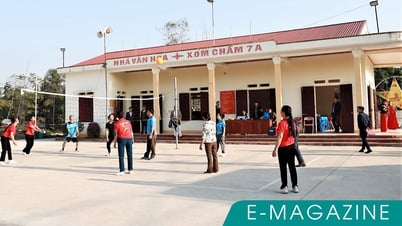
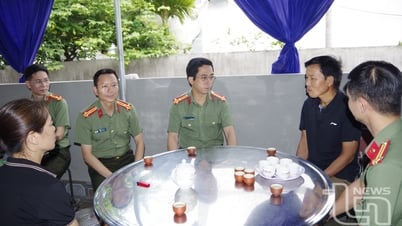
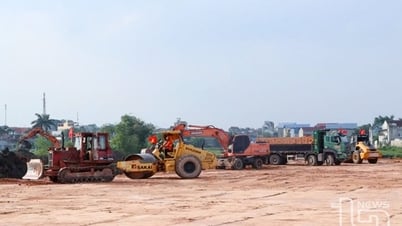







































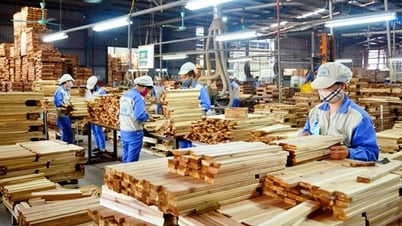
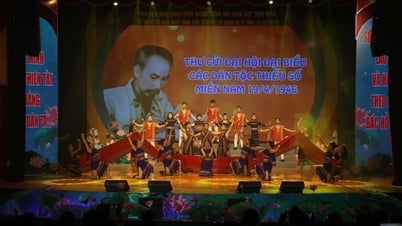

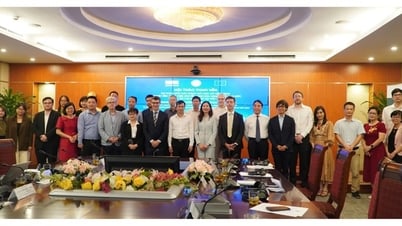


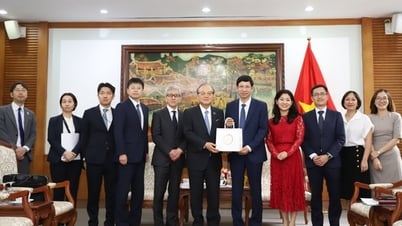


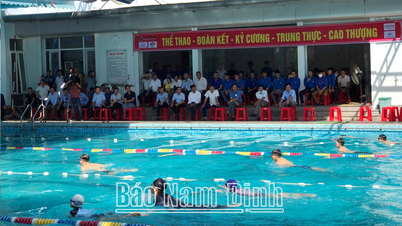
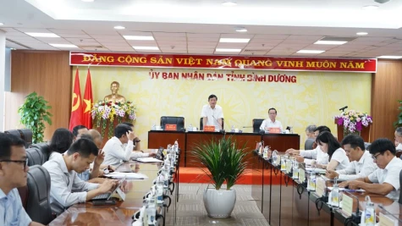

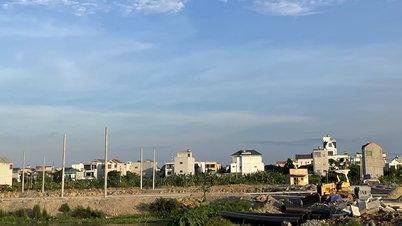



![[Podcast] Week introducing more than 500 OCOP products in Hanoi](https://vphoto.vietnam.vn/thumb/402x226/vietnam/resource/IMAGE/2025/5/22/d144aac2416744718388dbae3260e7fd)





Comment (0)